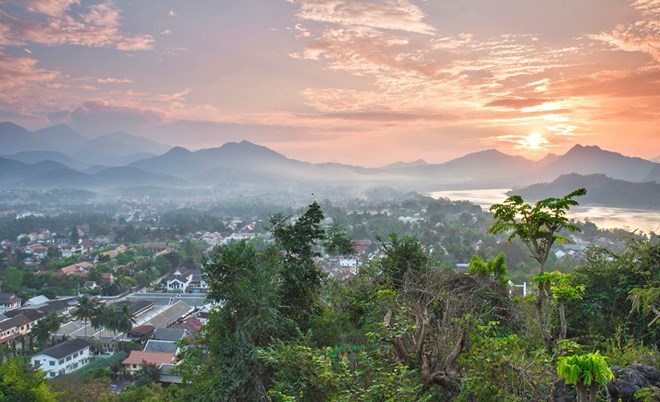Airport bus service to start next week
A new shuttle bus service, operating between Wattay International Airport and the Talat Sao Mall central bus station using vehicles donated by Kyoto City Bus, will begin on January 18.
Deputy Manager of the Vientiane City 2 Bus Service, Mr Sithiphon Chanthavong, said yesterday that shuttle buses will run daily from 9am until 10pm, following a trial run on Monday.
Buses will leave every 40 minutes from the airport and central bus station with passengers charged 15,000 kip for a one way trip.
The airport run is currently only serviced by taxis which charge passengers about 58,000 kip (US$7) to destinations in the city centre.
“The shuttle bus will set down at 16 bus stops from the airport along Souphanouvong Road, past the Presidential Palace and en route to the Talat Sao Mall central bus station,” Mr Sithiphon said.
Passengers will soon be able to download an app on Android smartphones to hire a taxi and check on bus routes and timetables after it is officially launched next week, he added.
The Vientiane City 2 Bus Service recently launched the Talat Sao Mall to Lao-ITECC route to encourage more people to use public transport and reduce traffic congestion in the city centre.
Passengers can catch a ride between Lao-ITECC and Talat Sao, with 18 stops in between, for just 4,000 kip one way.
Kyoto City Government donated 34 buses to the Vientiane Public Works and Transport Department at a ceremony held on November 29, 2016, at Kyoto City Hall Plaza in Nakagyo Ward, Kyoto, Japan.
The State Bus Enterprise reported recently that the number of passengers using public transport in urban areas rose by about 20 percent last year.
The public bus station in Vientiane handles 129 buses including 42 new Japanese buses, which is sufficient to cover the main routes through the city.
The enterprise is now installing new bus stops across the capital where buses will only set down and pick up passengers to prevent random hail and ride pickups which add to traffic congestion.
~News courtesy of Vientiane Times~
A new shuttle bus service, operating between Wattay International Airport and the Talat Sao Mall central bus station using vehicles donated by Kyoto City Bus, will begin on January 18.
Deputy Manager of the Vientiane City 2 Bus Service, Mr Sithiphon Chanthavong, said yesterday that shuttle buses will run daily from 9am until 10pm, following a trial run on Monday.
Buses will leave every 40 minutes from the airport and central bus station with passengers charged 15,000 kip for a one way trip.
The airport run is currently only serviced by taxis which charge passengers about 58,000 kip (US$7) to destinations in the city centre.
“The shuttle bus will set down at 16 bus stops from the airport along Souphanouvong Road, past the Presidential Palace and en route to the Talat Sao Mall central bus station,” Mr Sithiphon said.
Passengers will soon be able to download an app on Android smartphones to hire a taxi and check on bus routes and timetables after it is officially launched next week, he added.
The Vientiane City 2 Bus Service recently launched the Talat Sao Mall to Lao-ITECC route to encourage more people to use public transport and reduce traffic congestion in the city centre.
Passengers can catch a ride between Lao-ITECC and Talat Sao, with 18 stops in between, for just 4,000 kip one way.
Kyoto City Government donated 34 buses to the Vientiane Public Works and Transport Department at a ceremony held on November 29, 2016, at Kyoto City Hall Plaza in Nakagyo Ward, Kyoto, Japan.
The State Bus Enterprise reported recently that the number of passengers using public transport in urban areas rose by about 20 percent last year.
The public bus station in Vientiane handles 129 buses including 42 new Japanese buses, which is sufficient to cover the main routes through the city.
The enterprise is now installing new bus stops across the capital where buses will only set down and pick up passengers to prevent random hail and ride pickups which add to traffic congestion.
~News courtesy of Vientiane Times~







